Breast cysts
Other names for breast cysts are... fibrocystic breasts, fibrocystic breast disease, chronic cystic mastitis, mammary dysplasia, diffuse cystic mastopathy, fibrosclerosis of breast, fibroadenoma, fibroadenomata.
Further terms used are mastalgia, mastodynia or mammalgia, these basically mean breast pain.
Fibrocystic breasts are characterised by tender lumps or cysts within the breast tissue. About 60% of women are affected and usually between the ages of 30 and 50. It is rare in postmenopausal women, unless they are taking HRT.
They are benign and generally more prevalent the few days before menstruation, when the level of progesterone begins dropping. Normally they resolve within the first few days of bleeding, but if they persist this is an indication that the level of progesterone is too low throughout the month.
Progesterone levels begin dropping from about age 35 when anovulatory cycles start occurring. It's this lack of progesterone which initiates fibrocystic breasts. See here and here. Although they can occur in younger women prior to menstruation, they are far more prevalent during Peri-menopause, with it's increasing anovulatory cycles and therefore dropping progesterone levels.
The causes of breast cysts are still not fully understood, although it is recognised that the menstrual cycle is involved. And yet one 1975 study found the level of oestradiol was normal, but progesterone levels were far lower during the luteal phase than they should be. This showed a defect in secretion of progesterone by the corpus luteum. So as yet, the awareness that it's the drop in progesterone that causes them is not fully realised. And that the ratio of the two hormones are out of balance. See here.
Men can suffer from painful breasts if gynecomastia is present. For more information see Man Boobs.
Symptoms
- lumps which are usually tender and can change in size
- swollen breasts which are often painful
- nipple discharge
There are three hormones involved in breast cysts... oestrogen (principally oestradiol) prolactin and progesterone. Oestrogen and prolactin are inflammatory hormones, progesterone is an anti-inflammatory.
The proliferative effects of oestrogen in the breast are well known. It's due to increases in mitotic activity of breast cells. Phytoestrogens also cause proliferation, it's best to avoid all soy products and other foods which contain them.
Progesterone is an anti-inflammatory hormone. It not only inhibits oestrogen induced mitosis and proliferation, but causes differentiation of the cells. See here. It also inhibits prolactin production.
If swelling of the breast occurs, diuretics are often given. There is no better diuretic than progesterone, so efficient it's now used via IV transfusion for Traumatic Brain Injury victims to prevent any oedema forming.
Oestrogen increases mitotic and secretory activity of several cells in the pituitary, but particularly the proliferation of prolactin cells. See here and here. Prolactin is regarded as the hormone of lactogenesis, ie causes milk to be produced, but it does have inflammatory properties too.
High prolactin suppresses the ovulatory cycle, which causes progesterone levels to drop. If progesterone is high enough it suppresses prolactin, which prevents lactation during pregnancy. It's only after birth when progesterone levels drop, that prolactin rises.
Certain drugs increase prolactin production, in particular the contraceptives due to their high oestrogen content. The progestin component also reduces progesterone levels.
Stress contributes to high prolactin levels. The neurotransmitter dopamine suppresses prolactin production. See here and here. Dopamine is a major contributor in helping the mind to focus and concentrate, levels drop when stressed.
The amino acid L-tyrosine is the precursor to dopamine. Dopamine is synthesised in nervous tissue and in the adrenals from tyrosine. Noradrenaline and adrenaline are then synthesised from dopamine. These two, together with cortisol, make up the stress hormones. With a high level of stress dopamine levels will drop, due to rapid conversion to noradrenaline and adrenaline.
A lack of protein in the diet, in particular the amino acid tyrosine, slows down the production of dopamine. It's essential to keep dopamine and progesterone levels up to ensure prolactin remains low.
A lack of iodine can cause sore breasts. Iodine deficiency is becoming widespread again. It's a vital component of the two thyroid hormones T3 and T4, tyrosine is another vital component. Thyroid problems are widespread too. See here and here A blood test would be advisable, and once an iodine deficiency is found, chelated iodine can be taken. A quick and easy way to find if there is a deficiency, is to apply three drops anywhere on the inner arm, rubbing them in with the dropper. If the patch fades in a few hours it means there's a deficiency.
Natural treatment of breast cysts
The amount of progesterone will be dependent on the individual and the severity of the problem. Between 100-200mg/day of progesterone should be used. In severe cases more might be needed, vary the amount used following symptoms as a guide. A progesterone cream is the most versatile means of using progesterone, as it can be applied directly to the breasts.
For more information see the page How to use progesterone cream.
Before using progesterone it's essential to read the page on Oestrogen dominance first.
When dealing with breast cysts it's essential to keep dopamine levels up to inhibit prolactin production. Adding more protein to the diet will assist. Alternatively take 250mg/day tyrosine in the morning. This requires vitamin B3 and folic acid for conversion, so take 100mg B3 and 300mcg folic acid. Gradually increase the tyrosine dose until the optimum is found. It is safe to go up to 6000mg/day. There's no need to increase the B vitamins.
Excess oestrogen can also be reduced by Calcium D-glucarate. Oestrogen is metabolised in the liver by glucuronic acid, the process is known as glucuronidation. The process also removes other substances, including toxins, drugs, bilirubin, androgens, mineralocorticoids and glucocorticoids.
It's then excreted in the bile, but an enzyme in the intestine called beta-glucuronidase breaks the oestrogen/glucuronide bond, which allows oestrogen to be reabsorbed. There's evidence beta-glucuronidase activity is increased in breast and prostate cancer. Calcium D-glucarate inhibits beta-glucuronidase. See here and here.
Another supplement worth taking is DIM (diindolylmethane). Oestrogen is broken down into two principle metabolites, 2-hydroxyestrone (2-OHE1) and 16-alpha hydroxyestrone (16alpha-OHE1). 16alpha-OHE1 is regarded as a potent oestrogen, whereas 2-OHE1 is a weak oestrogen. DIM increases levels of 2-OHE1, by doing so it also increases the ratio of 2-OHE1:16alpha-OHE1. This increased ratio is associated with a lower risk for breast cancer.
Check for an iodine deficiency, and if found take chelated iodine.
Conventional treatment of breast cysts
- A physical examination is performed by a doctor if a lump is found
- Mammograms are used to confirm the presence of lumps or cysts
- Ultrasounds are often used too
- A breast biopsy is undertaken if cancer is suspected. Although if the cysts occur on a regular basis with the menstrual cycle, it's highly unlikely to be cancer
- aspiration is often resorted to
- if the cyst is large surgery is used to remove it
There is no satisfactory medical treatment for breast cysts. Danazol and bromocriptine are occasionally used, but they come with adverse side effects. Treatment is mainly focused on alleviating any pain if present. Hence the use of anti-inflammatories such as ibuprofen or acetaminophen. If swelling is present, diuretics are sometimes advised, or a reduction in salt.
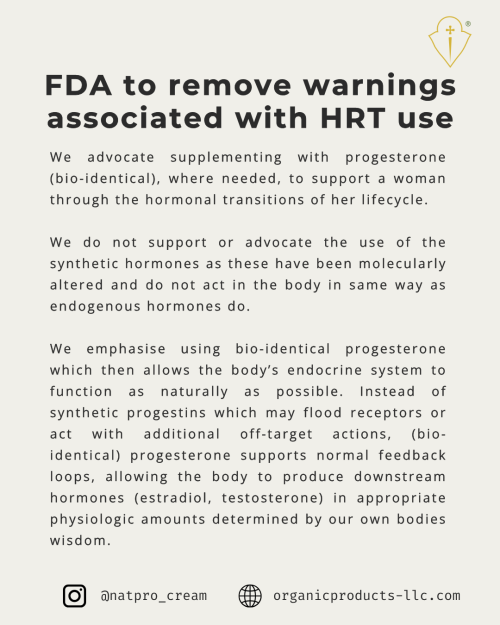
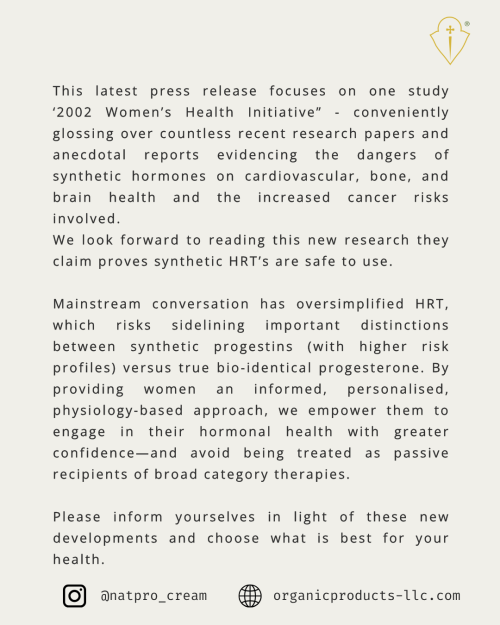 _____
_____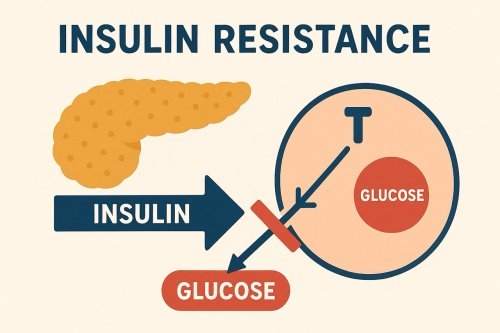 Feeling tired, foggy, or struggling with stubborn weight gain—especially around the waist? You might be surprised to learn that these symptoms could be linked to insulin resistance, a condition that a…
Feeling tired, foggy, or struggling with stubborn weight gain—especially around the waist? You might be surprised to learn that these symptoms could be linked to insulin resistance, a condition that a… Are you struggling with irregular cycles, unwanted hair growth, or unexplained fatigue? You’re not alone. Polycystic Ovarian Syndrome (PCOS) affects up to 10% of women of reproductive age—and many mor…
Are you struggling with irregular cycles, unwanted hair growth, or unexplained fatigue? You’re not alone. Polycystic Ovarian Syndrome (PCOS) affects up to 10% of women of reproductive age—and many mor…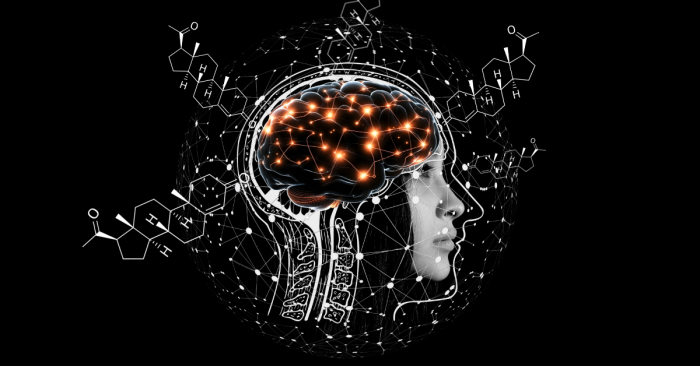 While progesterone is often discussed in relation to reproductive health, emerging research reveals its remarkable role in supporting brain function and protecting against neurological decline. Proges…
While progesterone is often discussed in relation to reproductive health, emerging research reveals its remarkable role in supporting brain function and protecting against neurological decline. Proges…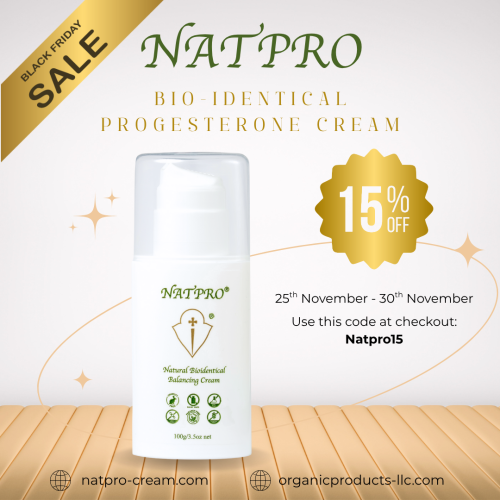 Incase you missed it!
Today is the last day for you to claim 15% off our Natpro 100ml Dispensers. The sale ends at midnight tonight.
How to Claim Your 15% Discount:
•Shop at
Incase you missed it!
Today is the last day for you to claim 15% off our Natpro 100ml Dispensers. The sale ends at midnight tonight.
How to Claim Your 15% Discount:
•Shop at